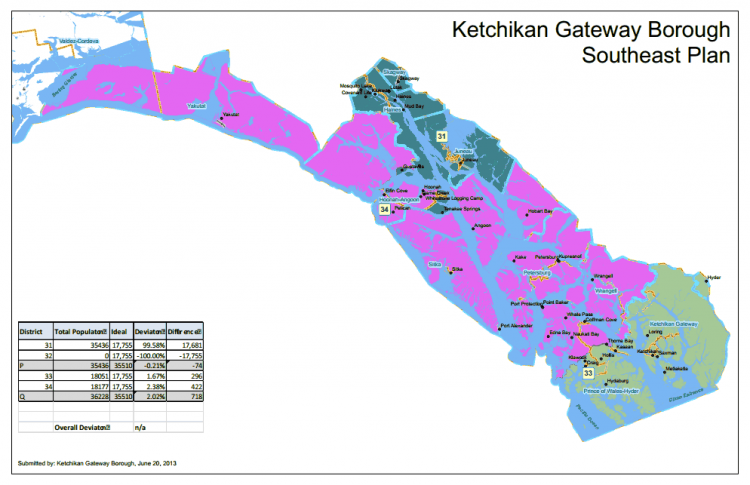
The Alaska Redistricting Board has come up with seven new maps of its own. Four more were submitted by the Ketchikan Gateway Borough, the Calista regional Native corporation and two other groups. (Link to the maps and related documents.)
But the redistricting maps posted online are small or compressed. So, it’s hard to even tell where some communities end up.
“I don’t think anybody really knows what’s going on with redistricting,” said Skagway Mayor Stan Selmer.
Like many Southeast leaders, he’s considering the implications of another round of election-boundary changes.
“I’m a little bit disappointed that this has this much of a life,” he said.
The northern Lynn Canal community used to be linked to Haines, its nearby neighbor, and quite a few other small Southeast towns.
The current redistricting plan, undergoing a court-ordered review, puts Skagway in with downtown Juneau, Petersburg, Gustavus and Tenakee Springs.
New maps keep Selmer’s town linked to the capital city and its Lynn Canal neighbors.
“I know that geography really is the major component of tying Haines, Skagway and Juneau together,” Selmer said.
Most of the new redistricting maps match other Southeast communities with their neighbors, rather than long, narrow strings of towns.
For example, plans link all of southern Southeast together.
Dan Bockhorst is borough manager of Ketchikan, which submitted its own set of regional boundaries.
“The plan that was presented would encompass all of the Ketchikan Gateway Borough and areas with which Ketchikan has strong social, cultural, economic, geographic and transportation connections and similarities,” Bockhorst said.
Some of the 11 proposed maps shuffle communities and boundaries in the middle of the region.
A number, including Ketchikan’s, put Wrangell back in a district with Sitka and Petersburg. That’s what Petersburg wants, rather the current district with Juneau.
All these changes make it hard for some residents to know who their legislators are – and vice versa.
“I’ll just go with the flow, whatever it is. It’s just very frustrating when you get yanked around,” said Wrangell Representative Peggy Wilson.
She lost Sitka and Petersburg from her district for the 2012 elections. And she gained much-larger Ketchikan.
“The thing is, I know that district so well because I’ve had it for so long. And it’s been a challenge for me to get to learn all new people,” Wilson said.
Election districts have to have pretty much the same number of residents.
So when Southeast Alaska didn’t grow – and other parts of the state did – redistricting cost the region two of its eight legislative seats.
That forced small towns in with larger communities, some against their will.
Merrill Sanford is mayor of Juneau, which has about half the region’s residents and two of its four remaining election districts.
“It just seems like no matter how you cut it, we end up having to have some of the other littler communities around us, one way or the other, in our district. And of course that scares and worries them and I don’t blame them,” Sanford said.
A public hearing on the plans is set for noon to 4 p.m., July 2nd, in Juneau. Others are set for June 28th in Anchorage and July 1st in Fairbanks. Testimony will be taken in person and via teleconference.
